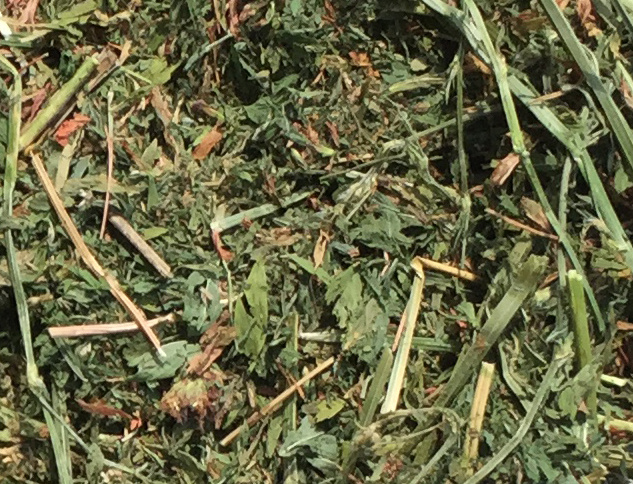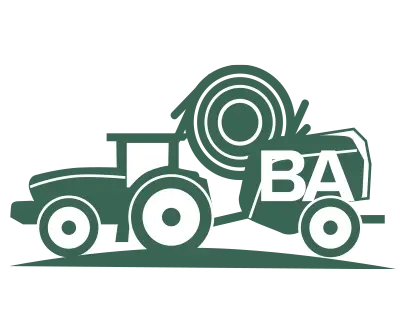The #1 challenge
for hay producers today
is moisture.
If you wait too long, hay loses its feed value. Bale too early, and you risk mold and heat buildup, leading to poor-quality hay. Mold growth causes heating and spoilage in all types of baled forage, including alfalfa and grass, which are especially vulnerable at higher moisture levels.
.jpg?height=1700&name=DJI_0166%20(1).jpg)
Baler's Choice™ in Action:
Before and After Results
Hay treated with Baler's Choice is greener and has a higher feed value.
Untreated
Treated

How Does Baler's Choice™ work?

Propionic Acid
Buffered to maintain a neutral pH, minimizing the risk of corrosion. Effectively stops the growth of mold and prevents heating in stored hay.

Citric Acid
Preserves the fresh smell and green color of hay. Ensures hay retains its quality even after extended storage.

Surfactant
Creates uniform particle size for consistent application. Reduces the risk of under-application caused by wind drift.
Baler's Choice™
Hay Preservative.
A consistent recipe in every container to ensure the highest quality product to preserve your hard-earned hay.
"it makes a big difference..."
"I would recommend the Harvest Tec acid........when you only have a small window to bale, it makes a big difference........For me, there's significant value in that—you can get more done in a day..... "
Bobby Hefter, a dairy farmer and custom baler in Brownsville, Wisconsin
Watch now
"it has been a game-changer...."
"We usually aim to start baling in June while the hay is still young grass. Using Baler’s Choice helps us produce a more palatable, higher-quality product.... "
Rob Bainbridge, operates a hay operation near Stokesley in North Yorkshire, England where he makes and sells hay to horse, sheep, and cattle customers.
Watch now

"...Baler’s Choice provides peace of mind and ensures consistent quality. "
"Since adopting a preservative system like Baler’s Choice, our hay quality and consistency have significantly improved.."
Henry Taylor, Taylor Made Forage, Planin Farm.
Watch now
Baler's Choice™ FAQs
No! Baler's Choice is a buffered propionic acid designed to be gentle on your equipment, ensuring it remains in top condition without any risk of corrosion or damage.
Balers Choice™ is a reliable and safe option for all livestock, including horses. For more information, please click the link below:
No. Rest assured, Baler's Choice is designed to withstand freezing conditions, provided the drum or tote is securely sealed after each use to prevent water from mixing with the preservative. Its integrity remains intact over time, ensuring consistent performance. Even if the green color diminishes, the preservative's effectiveness remains uncompromised.
Absolutely not. Baler's Choice is safe and non-hazardous in the U.S. and Canada, allowing for easy use and transport without any additional requirements.
All our solutions can be purchased from your local ag dealer!
Need help finding a dealer near you? Check out our Dealer Network Page!
No dealer support in your area but still want to purchase?
We have you covered! We can work with you directly to order replacement parts and small kits. Contact us to find out how!
Call: 800-635-9100
Email: info@harvesttec.com


.png?width=1109&height=405&name=HT_horizontal%201976_TM%20(1).png)







